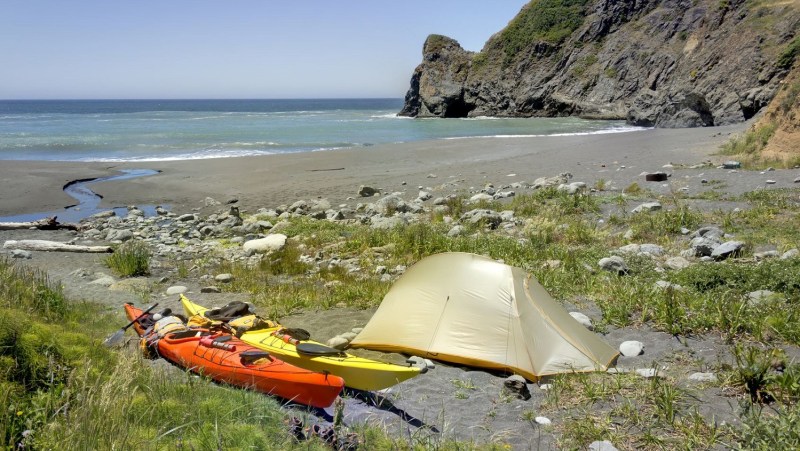
Find the Bridge to Nowhere

In 1929, construction began near Azusa, California, to connect the town of Wrightwood with the San Gabriel Valley. Among the many bridges required to wind the road through the valley was a unique arch bridge built in 1936. The bridge was among the first to see completion, long before the rest of the route. Unfortunately, a massive rainstorm washed away much of the road before it was finished and the project was subsequently abandoned. Yet, the arched bridge remained — a bridge that connected … nothing. Hence the name: Bridge to Nowhere. It’s one of California’s unique, architectural oddities. Getting to the bridge requires a 10-mile round-trip trek along the San Gabriel River. The hike is moderately challenging, although numerous river crossings mean you’re unlikely to stay dry along the way. The final approach through a high-walled canyon known as the Narrows is the journey’s most dramatic stretch. It is here that hikers will find the Bridge to Nowhere in all its civil engineering glory.
Good to know: The Bridge to Nowhere is the base of operations for Bungee America, one of California’s only commercial bungee-jumping outfits.
Explore the Lost Coast

California’s coastline — particularly the 650-mile stretch that follows State Route 1 — is among the most beautiful, scenic road trips in the U.S. The northern end of the road terminates at its juncture with U.S. Route 101. But, as wise backpackers know, the coast continues for many miles north along what has rightly become known as the “Lost Coast.” The rugged region is the Golden State’s least developed stretch of shoreline. There are no major roads in or out, meaning it’s only accessible on foot. The hike between the Mattole River and Black Sands Beach (near Shelter Cove) requires about three days. Adventurers experience a disparate landscape of untouched forest, beaches, tidal pools, and the peaks of the King Range reaching 4,000 feet high above the Pacific Ocean.
Good to know: This is a one-way hike, so be sure to arrange proper transportation at the opposite end of your trek. The area’s tides are also notoriously extreme, so bring a tidal chart, lest you get stranded in a flooded cove. And never turn your back on the ocean.
Paddle through Ancient Wetlands

The 6,000-acre Ahjumawi Lava Springs State Park is arguably California’s least-visited state park due to the fact that it’s only accessible by boat. However, the lack of other park-goers and the massive amount of watershed activity make it one of the state’s most worthwhile treks. The name Ahjumawi means “where the waters come together” among the region’s Pit River Native Americans. It’s no surprise when you consider the park is at the confluence of five major watersheds. Outdoor-loving travelers will find no shortage of flora and fauna to seek and photograph here. Whether hiking or kayaking, you’re likely to have the trails and waterways all to yourself. Overnight camping is available with no advanced reservations required.
Good to know: No gear of your own? No problem. Several local outfitters provide rental services for kayaks and racks, as well as half- and full-day tours.


